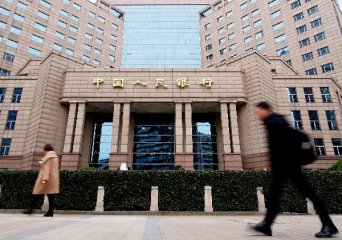
Diamonds are forever and so now, apparently, are Chinese bank bonds. Bank of China, the country’s fourth-largest bank, late last week issued a 40 billion yuan ($6 billion) perpetual bond, the first from a Chinese bank. The deal’s popularity—it was two times oversubscribed, coming in at a 4.5% yield—means more will likely follow. The identity of future issuers and how the raised funds are used should be top of investors’ concerns.
This first issue followed some last-minute moves from Chinese regulators aimed at making buying bank perpetual bonds more attractive. On Thursday, primary dealers in the bonds got the green light to swap them for far-more liquid bills issued by the central bank. Perpetual bondholders will also be allowed to use those rated at AA or higher as collateral for various central bank lending facilities. Chinese insurers were given permission to buy perpetual bonds last week too; they ended up being big buyers of the Bank of China bond.
All this suggests Beijing is getting creative about replenishing bank balance sheets. With most leading banks, including Bank of China, trading at below their book value, issuing fresh equity isn’t a viable option. Perpetual bonds, which get treated as equity for regulatory purposes, are an attractive alternative. Bank of China’s Tier 1 capital-adequacy ratio could jump by 0.3 percentage points following the deal, the central bank said. It stood at a healthy-looking 11.99% at the end of the third quarter.
While this capital raise may help Bank of China, it is likely Beijing’s main aim was to set a positive precedent for this new market. After all, it is China’s small- and medium-size banks—starved of deposits and heavily reliant on wholesale markets for funding—that really need fresh capital. Investors, though, will surely want more reward than a 4.5% annual yield to hold ultra-long-term bonds of regional Chinese banks, whatever support the central bank offers to future buyers.
Another worry is how all this fresh capital will be used. China needs to replenish bank balance sheets racked with bad loans; what is doesn’t need is the enabling of yet more lending to the turgid state-owned sector at the expense of China’s more vibrant private companies. Without reforms to incentivize more productive lending, China’s real perpetual problem—its chronic misallocation of capital—will only worsen, however much capital banks raise.






















Latest comments